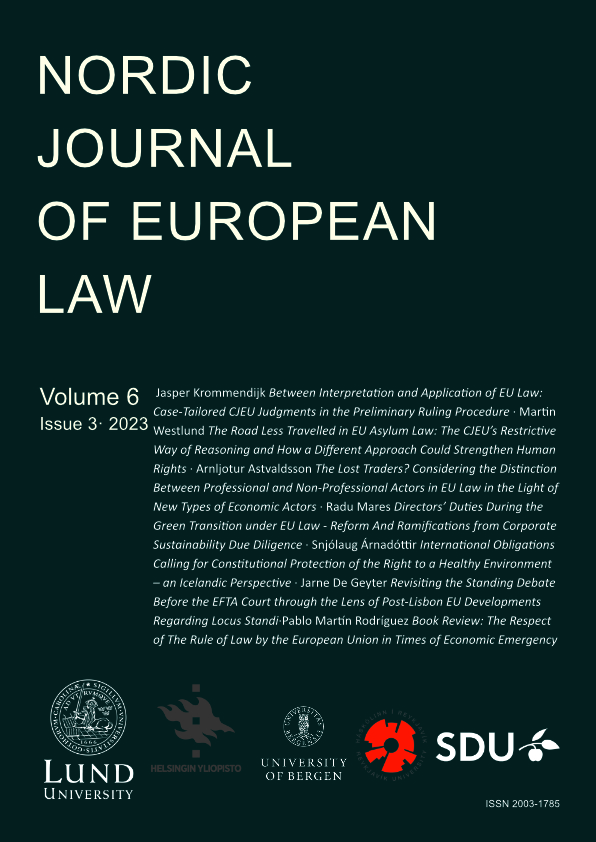Between interpretation and application: case-specific CJEU judgments in the preliminary ruling procedure
Main Article Content
Abstract
The division of roles between the CJEU and national courts in the preliminary ruling procedure is clearly defined, at least on paper. The CJEU interprets EU law and the referring national court applies this interpretation to the case pending before it. In the literature, there are often complaints that this is different in practice and that the CJEU all too often steps into the domain of the national judge by not limiting itself to only interpreting EU law but also applying the interpretation to the national legal or factual context. Too much case specificity may put the referring court in a difficult position, especially in cassation appeals when the facts have already been established. Little is known as to whether the CJEU adheres to the clear ‘separation of functions’. This contribution analyses to what extent and why the CJEU abides by this division. It examines 55 judgments delivered during the period between 1 January 2020 and 22 March 2021 in response to questions from courts in five EU Member States (the Netherlands, Ireland, the Czech Republic, Sweden and Greece). This structured case law analysis aids the identification of factors that contribute to outcome-oriented judgments. The article also critically examines the approach of the CJEU from a normative perspective weighing the pros and cons.
Article Details

This work is licensed under a Creative Commons Attribution-NonCommercial-NoDerivatives 4.0 International License.

